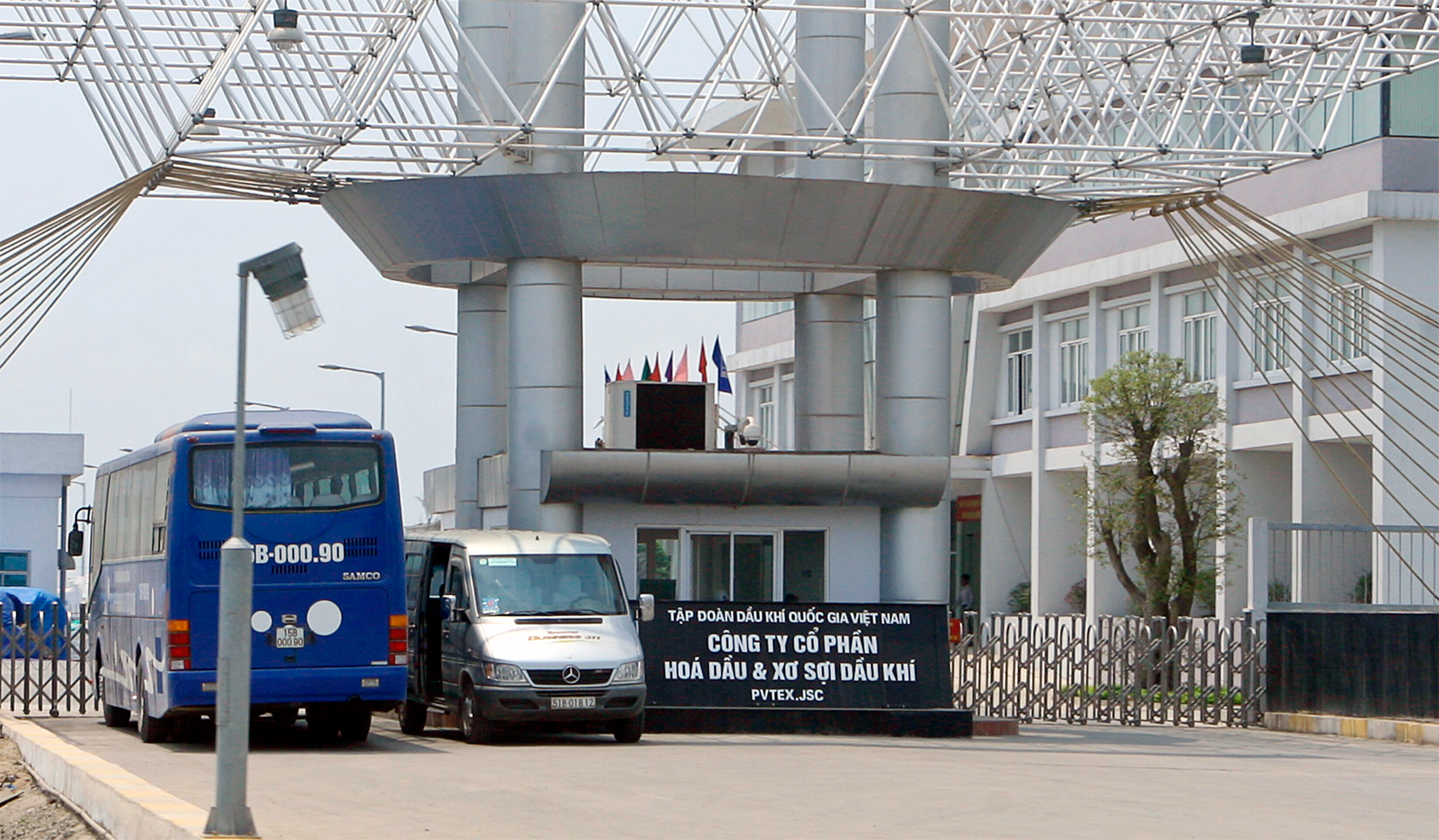Mega polyester fibre plant may resume production
 |
| PVTEX uses materials from Dung Quat Oil Refinery to make fibre |
The leaders of state-owned oil and gas giant PetroVietnam and state-owned textile and clothing conglomerate Vinatex recently met to discuss resuming the consumption of the fibre plant’s products.
Based in Dinh Vu Economic Zone in the northern port city Haiphong, the plant has a total investment value of nearly VND7 trillion (about $325 million) and was planned to use feed from Dung Quat Oil Refinery in the central province of Quang Ngai to produce fibre. PetroVietnam owns 75 per cent of the plant.
The meeting was a message for a possible resumption of operations at Dinh Vu Polyester Fibre Plant (PVTEX) which halted production in October 2015 due to losses after the first year of commercial operations.
PetroVietnam's general director Nguyen Vu Truong Son said that the group is actively cooperating with related bodies in order to bring the fibre plant back into operation—the sooner the better.
PVTEX is one of 12 notorious projects under the management of the Ministry of Industry and Trade (MoIT) decrying ineffective operation.
Of these 12 projects, five are under the management of PetroVietnam, including bio-fuel production plants Ethanol Phu Tho, ethanol Binh Phuoc, Bio-ethanol Dung Quat, Dung Quat Shipyard, and PVTEX.
After consideration, MoIT authorised PetroVietnam to stop and let two projects—Dung Quat Shipyard and Ethanol Phu Tho—go bankrupt.
In the case of PVTEX, PetroVietnam is reportedly working on several scenarios. Of the proposed scenarios, such as offering the plant for lease and letting it go bankrupt, the scenario of resuming operations appears to be the most feasible.
In a talk with VIR after the recent meeting with PetroVietnam, Cao Huu Hieu, head of Vinatex’s Investment Department, said the total demand for fibre of the domestic textile and clothing industry is 500-600,000 tonnes per year, and Vinatex alone needs 60,000 tonnes.
During 2014-2015, some Vinatex’s member units who had used PVTEX’s fibre products said that the products were generally of fair quality, but there was a sad lack of quality consistency between different batches.
To spinning firms, stable fibre quality is crucial as it affects the quality of the spinning process as well as the need to adjust related machines’ technical parameters to fit the process.
“Therefore, apart from upholding the increased consumption of PVTEX products, Vinatex and Vietnam Textile Research Institute will provide our utmost support to help the plant control product quality,” Hieu said.
PVTEX began operations in May 2014. From the inception, the plant had constantly faced difficulties as it could hardly sell products due to its unstable quality.
Until now, the plant has halted operations for nearly two years , accumulating losses of around VND1.5 trillion ($68 million).
Until PVTEX halted operation in 2015, the plant had produced and sold more than 100,000 tonnes of fibre and filaments of various kinds.
Vinatex’s member units had consumed around 20,000 tonnes of the products.
| RELATED CONTENTS: | |
| PetroVietnam appoints saviour for ailing fibre subsidiary | |
| First made-in-Vietnam polyester fibre roll out | |
| Polyester fibre plant to begin production | |
What the stars mean:
★ Poor ★ ★ Promising ★★★ Good ★★★★ Very good ★★★★★ Exceptional
Latest News
More News
- Mitsubishi Estate launches Logicross Hai Phong - a milestone in logistics evolution (November 20, 2024 | 14:32)
- Semiconductor workforce partnerships deliver industry-relevant training (November 20, 2024 | 10:58)
- German Quickpack to invest $31.7 million in Long An province (November 20, 2024 | 09:31)
- Foreign-invested enterprises drive logistics investment in the southeast region (November 20, 2024 | 09:27)
- Chile visit underscores trade benefits (November 19, 2024 | 10:00)
- Trump’s second term impacts sci-tech activities and industry 4.0 technologies (November 18, 2024 | 10:00)
- Vietnam eyes nuclear revival to bolster energy security (November 14, 2024 | 16:46)
- Kyokuyo completes $13.5 million seafood factory in Vietnam (November 14, 2024 | 12:19)
- VinFast receives $3.5 billion funding from Vingroup and Pham Nhat Vuong (November 14, 2024 | 06:38)
- Localities sprint to reach FDI targets (November 13, 2024 | 10:00)


















 Mobile Version
Mobile Version